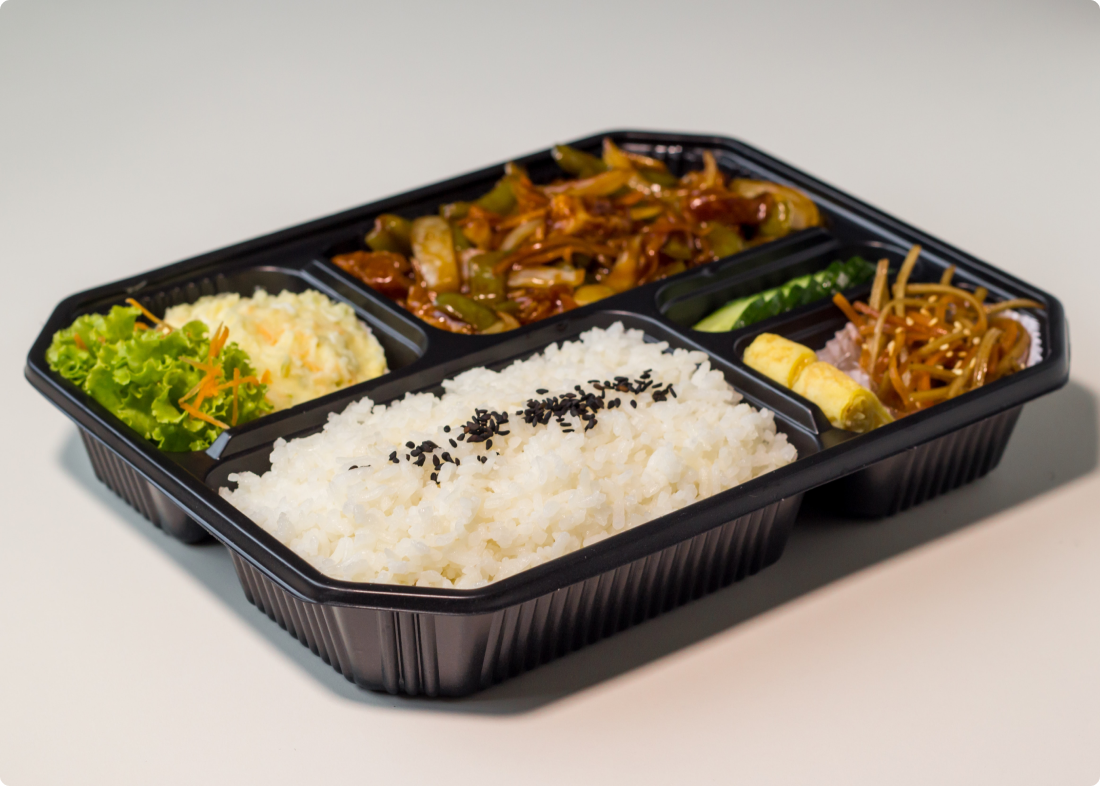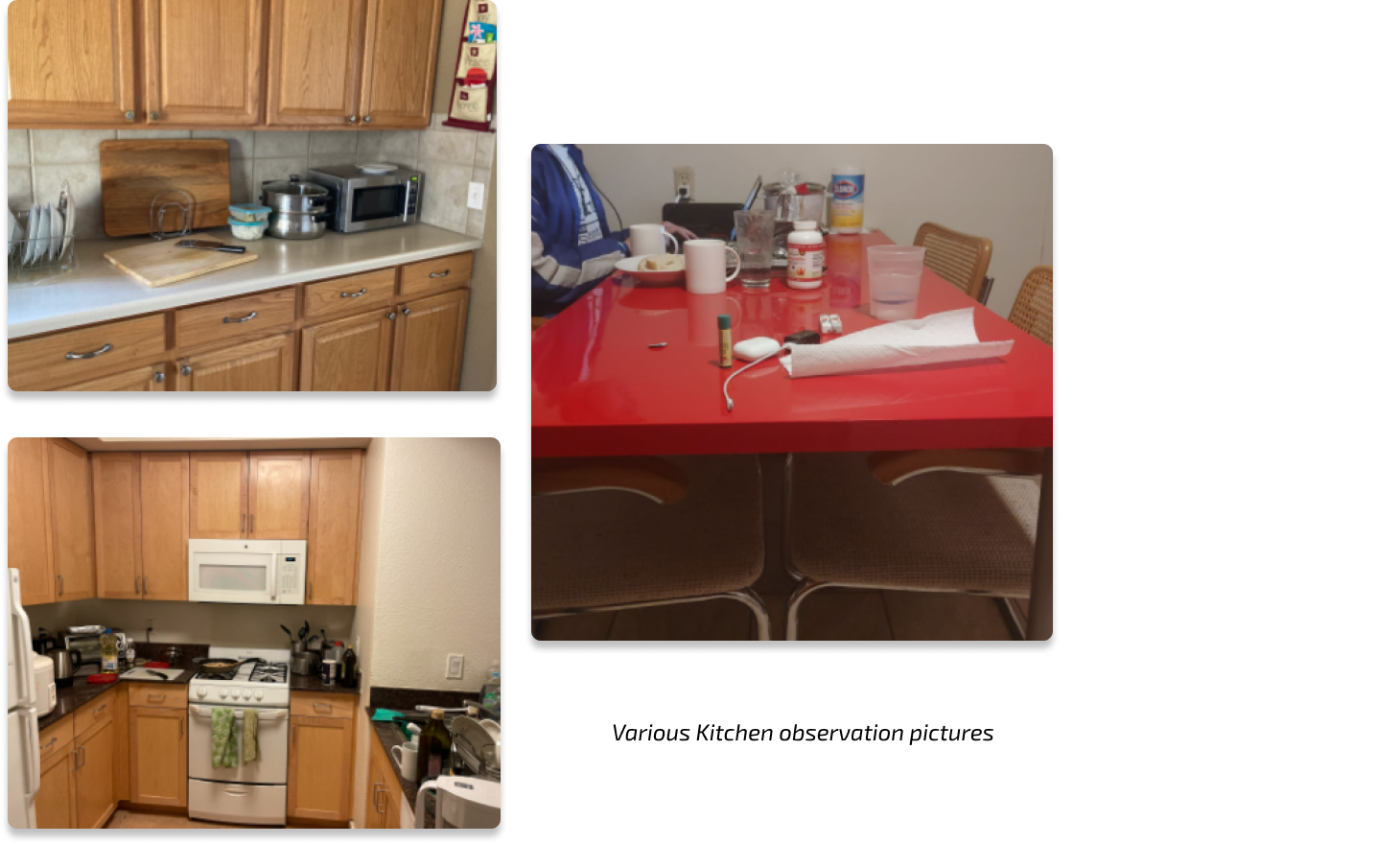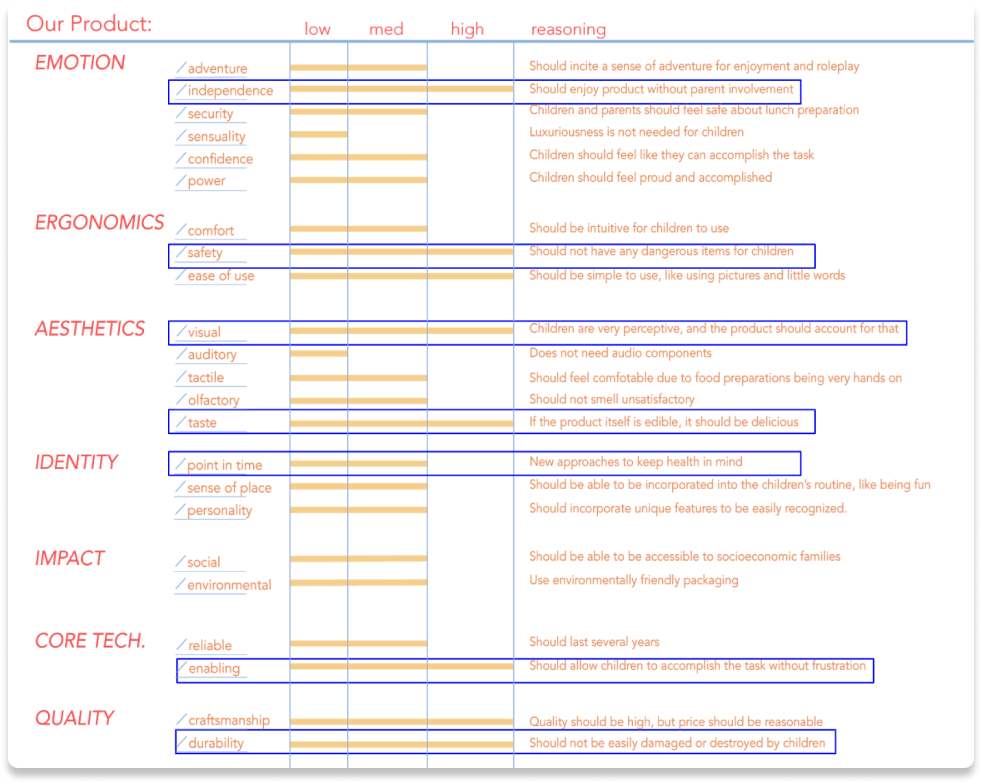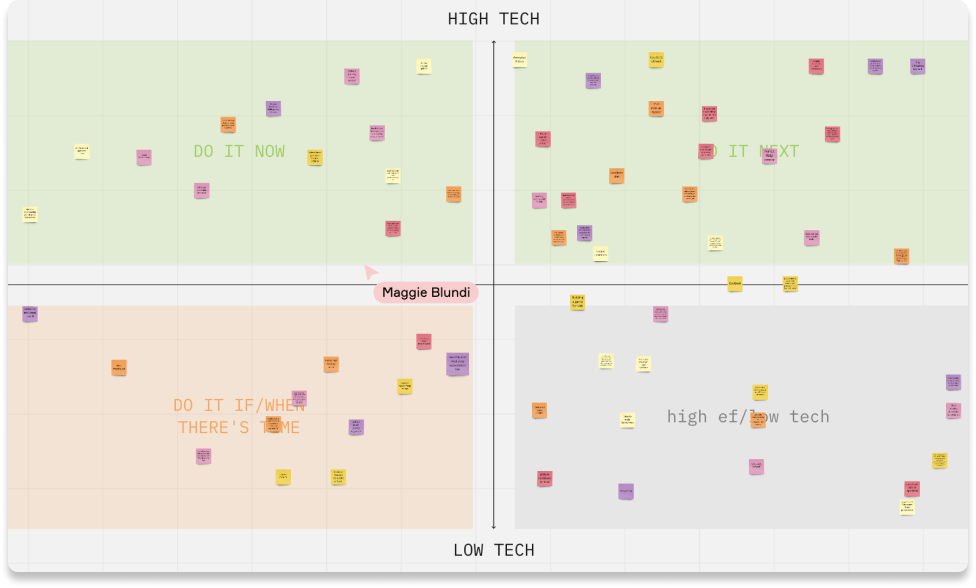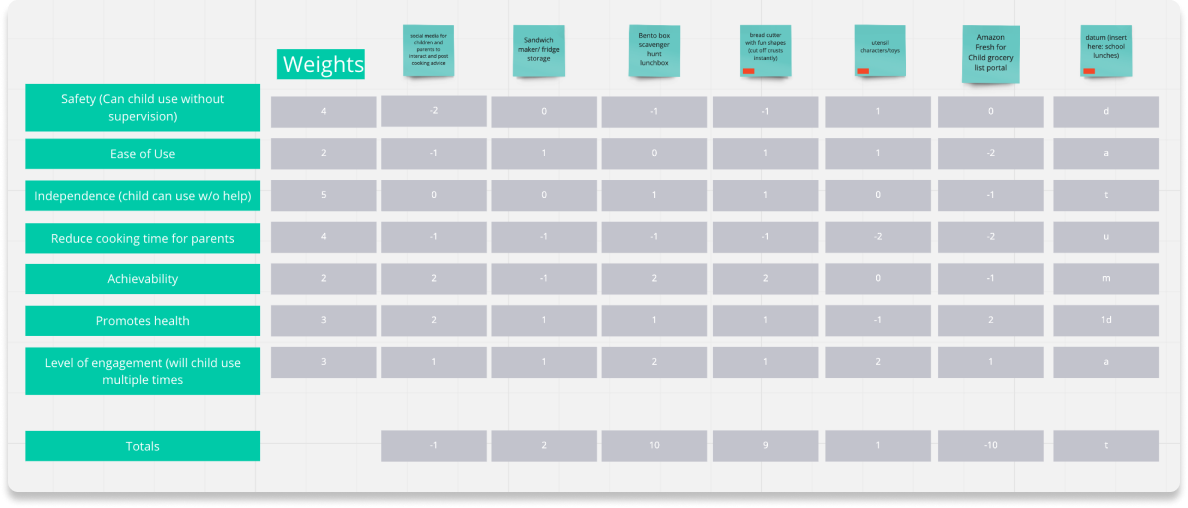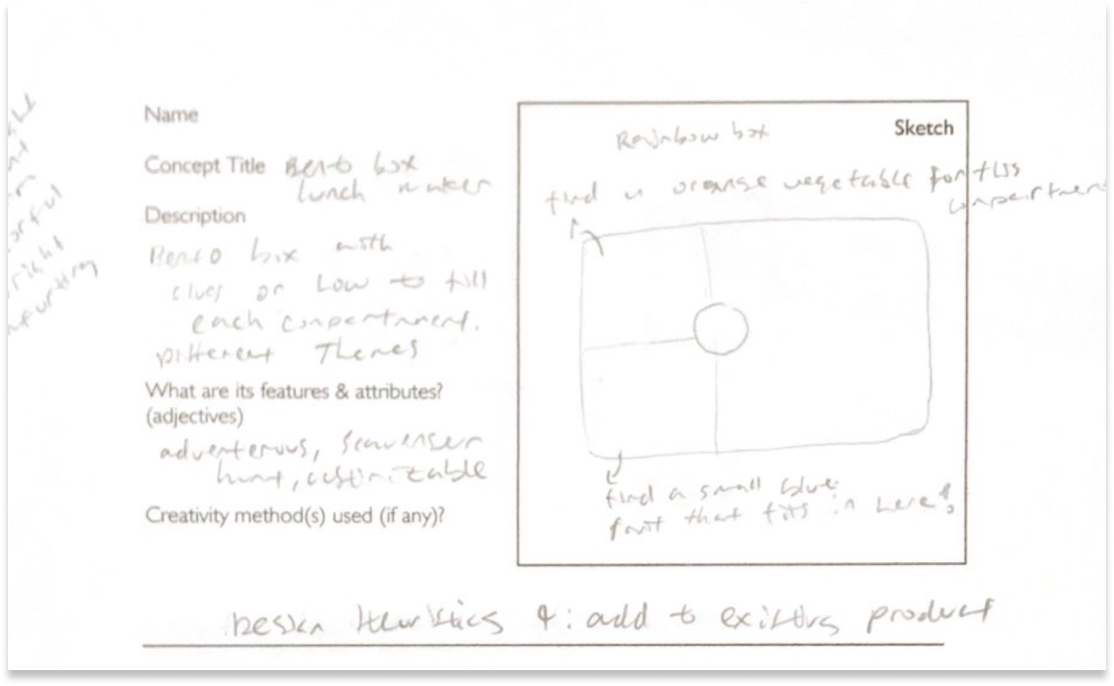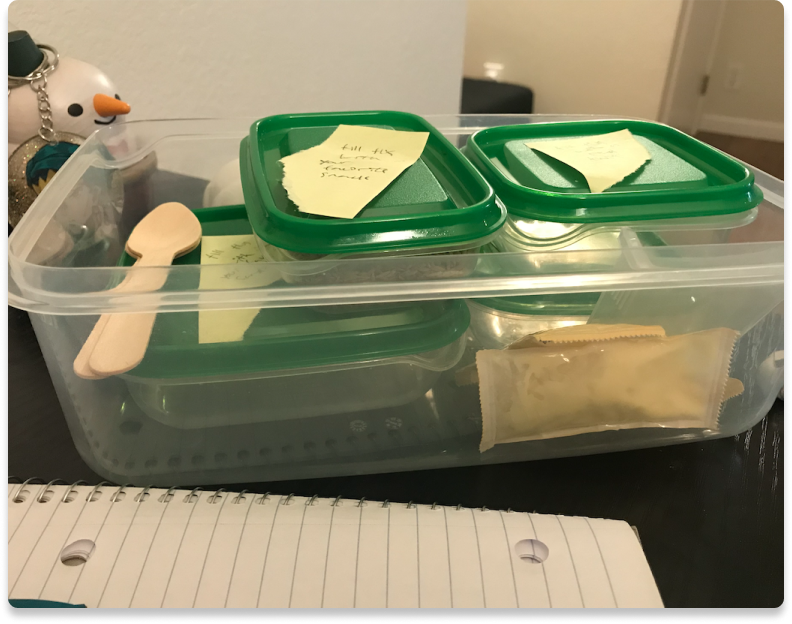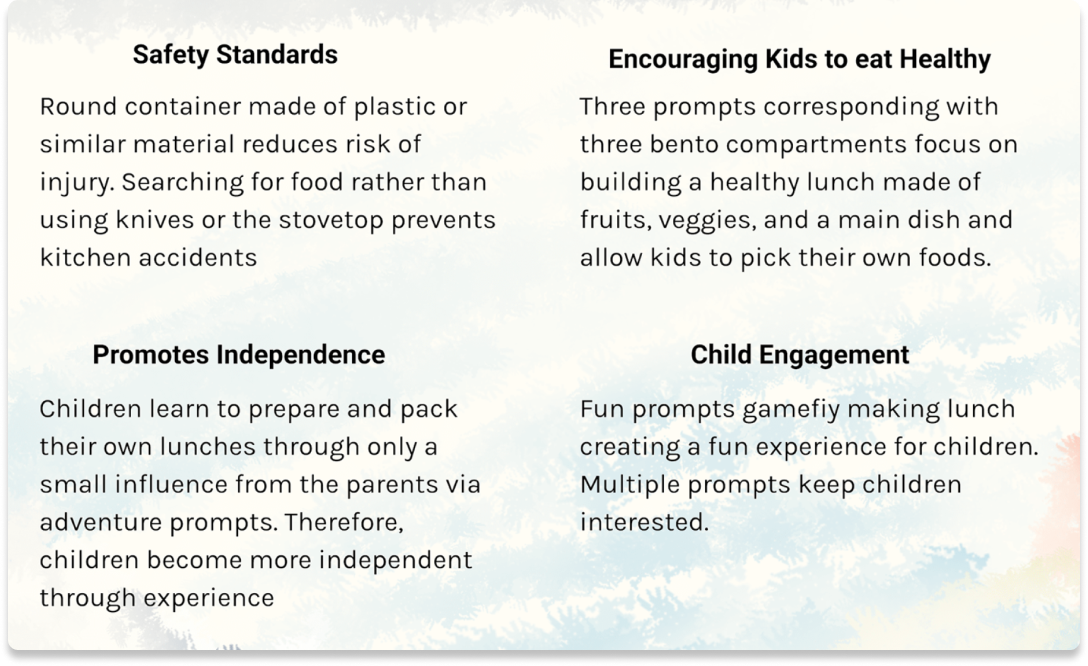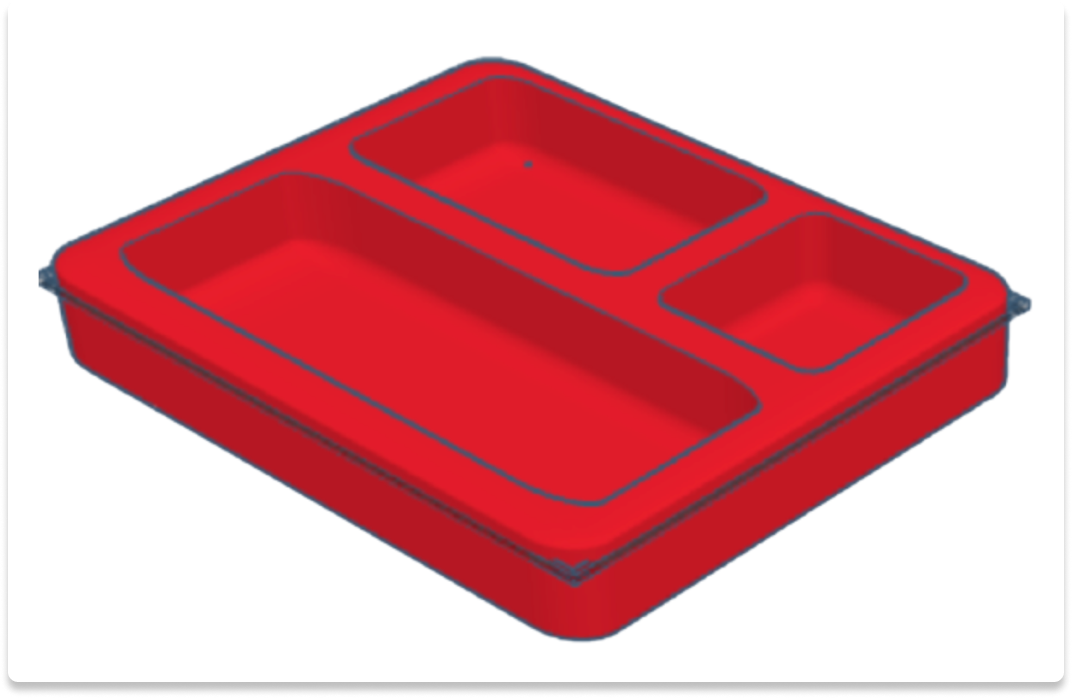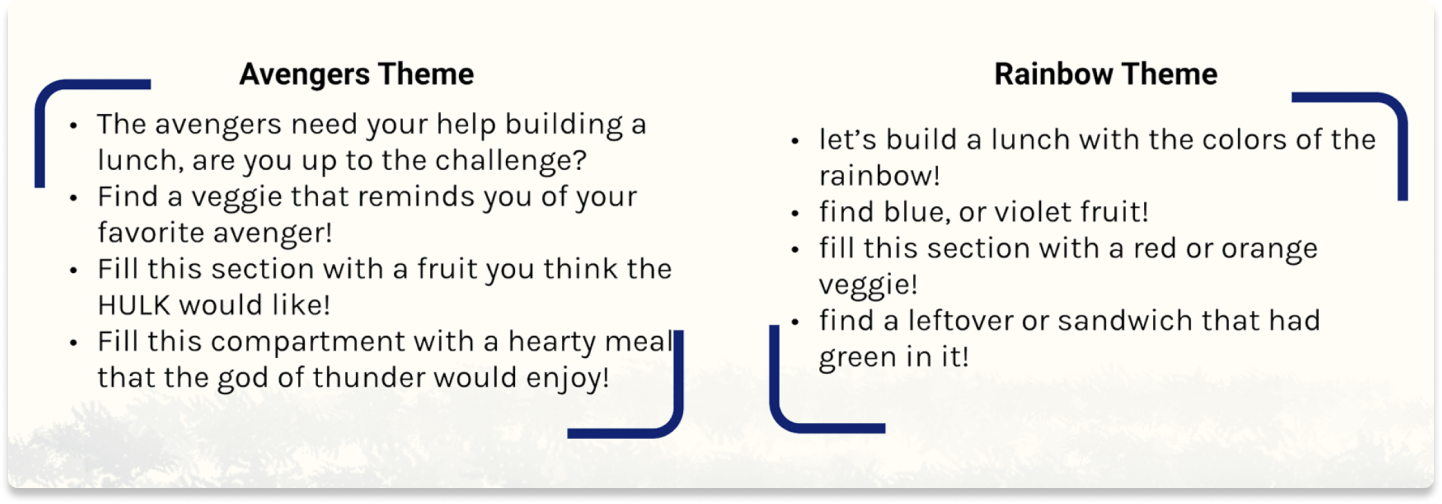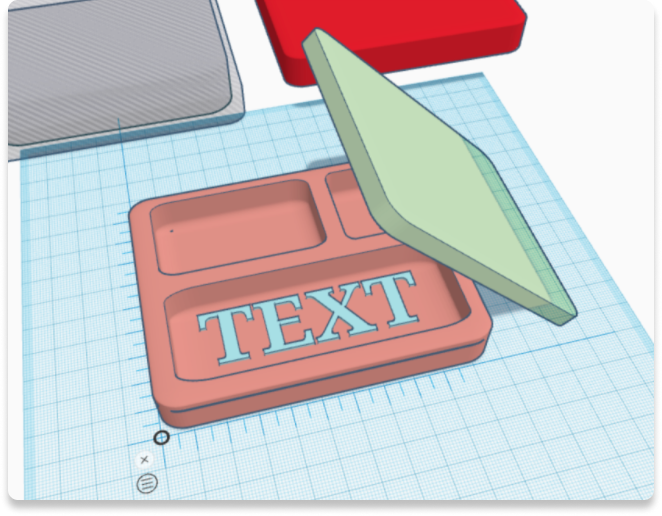As a part of the Design Methodologies class at UC Berkeley, I worked on a semester-long UX research project to answer the question of “how might we reduce cooking time?”. As a team we conceptualized Bentoventure, a bento box with different compartments and lids that prompt children to create their own lunch, minimizing parent involvement in the lunch packing process. For this project, I conducted 2 one-on-one interviews and collected observation pictures, synthesizing the data into a few main points that guided our design process. I also practiced several team design methodologies from brainstorming to prototyping. We presented our solution in a final design showcase at the end of the semester.
Location: Berkeley, CA
Timeline: January-May 2022
Stakeholders: children aged 5-11, parents of children aged 5-11
Team: Xiaoyu Hu, Jonathan Zvi, Rob Atienza,
Maggie Blundi, Shreejal Luital
Role: UX researcher, UX designer
Tools: 1:1 interviews, observation pictures, weighted matrices
3-12-3 concept generation, positioning chart, low fidelity prototyping



